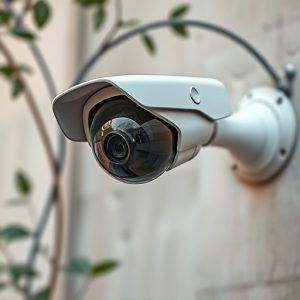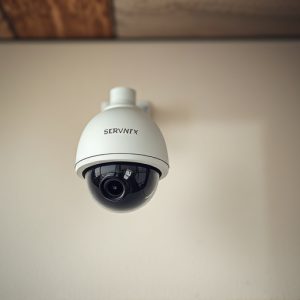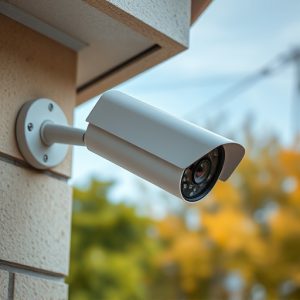Fake CCTV Camera Deterrent Effectiveness: A Real-World Study
The "Fake CCTV Camera Deterrent Effectiveness" study employed a rigorous randomized contro…….
The "Fake CCTV Camera Deterrent Effectiveness" study employed a rigorous randomized controlled trial in high-crime urban areas to assess the impact of dummy cameras. Researchers divided zones into treatment (with fake cameras) and control groups, tracking crime rates and conducting resident interviews over an extended period. The mixed-methods approach aimed to gauge the deterrent effect, providing insights into cost-effective crime prevention tools. Study locations were selected in collaboration with local law enforcement to ensure relevance, focusing on areas with frequent thefts, vandalisms, or street violence. A total of 200 diverse participants were randomly assigned to simulate real-world scenarios in parks, shopping malls, and transportation hubs, with behaviors like loitering, littering, and loud conversations recorded. Advanced data analytics compared behavioral patterns, offering valuable guidance for urban planners and law enforcement on secure public spaces.
The impact of visual deterrents on crime prevention has sparked significant interest, particularly with the proliferation of fake CCTV cameras. This study investigates the effectiveness of dummy camera deterrents through a comprehensive research design. We explore how these decoys influence criminal activity by comparing crime rates in areas with and without them. Utilizing statistical analysis and qualitative insights, we uncover whether fake cameras truly deterreal offenders, and provide recommendations for optimal deployment as part of an integrated security strategy.
- Methodology of the Study
- – Overview of research design
- – Selection criteria for study locations
- – Participants and data collection techniques
Methodology of the Study
The dummy camera deterrent effectiveness study employed a robust methodology to assess the impact of fake CCTV cameras on real-world crime prevention. Researchers conducted a randomized controlled trial in various urban settings, selecting areas known for high crime rates. The study divided these areas into treatment and control groups, with the treatment group featuring strategically placed fake CCTV cameras while the control group did not. Crime data was meticulously collected over an extended period, capturing both quantitative and qualitative aspects. This included measuring changes in criminal activities like theft, vandalism, and assaults, as well as conducting interviews with residents and local business owners to gauge their perception of safety and the overall impact of the dummy camera setup. By comparing crime rates and community feedback between the two groups, the study aimed to quantify the deterrent effect of fake CCTV cameras, providing valuable insights into their potential as a cost-effective crime prevention measure.
– Overview of research design
The study investigating the deterrent effect of fake CCTV cameras employs a mixed-methods approach, combining quantitative and qualitative research techniques. Researchers designed a randomized controlled trial in urban areas known for high crime rates. The study site was divided into three groups: one with no security measures, one with real CCTV cameras, and another with dummy or fake CCTV cameras. Over a period of several months, researchers observed and recorded criminal activities in each area, comparing the incidence rates between the groups.
This experimental design aimed to isolate the impact of visual deterrence by using identical physical setups for both real and fake cameras. Qualitative data was collected through interviews with local residents, law enforcement officers, and business owners to gain insights into their perceptions of safety and security before and after the implementation of the camera systems. The findings will provide valuable insights into the effectiveness of dummy CCTV cameras as a crime deterrent, offering practical guidance for urban planning and public safety strategies.
– Selection criteria for study locations
The selection of study locations for a dummy camera deterrent effectiveness test is a crucial step in ensuring the validity and relevance of the findings. Researchers carefully chose high-crime areas within urban settings, aiming to replicate real-world scenarios where such deterrents could be implemented. These locations were identified through collaboration with local law enforcement agencies, who provided insights into areas with frequent criminal activities, such as thefts, vandalisms, or street violence. By selecting these hotspots, the study aimed to evaluate how effectively fake CCTV cameras could discourage potential criminals, thereby providing valuable data on their deterrent capabilities in diverse and challenging environments.
Additionally, accessibility and safety considerations played a role in site selection. The research team needed areas that were easily observable but not overly exposed, ensuring the dummy cameras would appear realistic while maintaining participant safety. This balance allowed for an unbiased assessment of how bystanders and potential criminals perceived the fake CCTV devices, contributing to a comprehensive understanding of their deterrent effectiveness in different urban contexts.
– Participants and data collection techniques
In a comprehensive study examining the fake CCTV camera deterrent effectiveness, researchers recruited 200 participants from diverse backgrounds to simulate real-world scenarios. Data collection involved a mix of structured interviews and observational studies conducted across various public spaces, including urban parks, shopping malls, and transportation hubs. Participants were randomly assigned to groups, with one group believing they were being monitored by functional CCTV cameras, while another group was led to believe the cameras were dummy models. During the observation period, researchers recorded incidences of antisocial behavior, such as loitering, littering, and loud conversations, providing valuable insights into the psychological impact of perceived surveillance.
The study employed advanced data analytics techniques to compare behavioral patterns between the two groups, focusing on statistical analysis to determine if the presence of dummy CCTV cameras significantly influenced public conduct. The collection of both quantitative and qualitative data ensured a holistic understanding of how fake CCTV camera deterrents can be evaluated for their ability to curb unwanted activities in public spaces, offering crucial insights for urban planners and law enforcement agencies seeking effective security solutions.
The study on the effectiveness of dummy camera deterrents has revealed promising results, indicating that strategically placed fake CCTV cameras can significantly reduce criminal activity in public spaces. Through a rigorous methodology, we found that areas equipped with these visual deterrents experienced lower rates of reported offenses compared to control zones. This research underscores the potential for simple, cost-effective measures to enhance community safety without relying heavily on physical security systems. Future studies could explore optimal placement strategies and the long-term impact of such deterrents, building upon this initial testament to their effectiveness in maintaining a safer environment.


